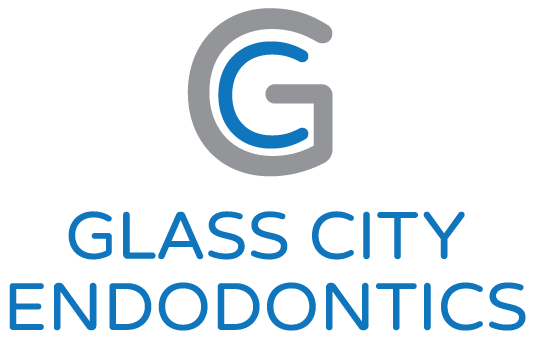Technology
Microscopic Technique
At Glass City Endodontics, our doctors are trained and experienced in all aspects of microscopic and microsurgical endodontics. Working with surgical operating microscopes enables us to perform procedures with the ultimate precision, efficiency, and confidence. Whether the treatment is a standard, non-surgical root canal treatment or a surgical endodontic procedure, the microscope provides superior illumination and magnification that allows maximum visualization of the root of the tooth. Defects that can impact the treatment and prognosis of the tooth such as cracks, root fractures, calcified canals, as well as canals with challenging root canal anatomy, can be visualized with this advanced optical system. Additionally, because our microscopic and microsurgical endodontic procedures involve the use of smaller instruments there is less tissue trauma from treatment, resulting in shorter recovery time and better healing.
Cone Beam Computed Technology
(CBCT)
Cone beam computed tomography (CBCT) offers accurate and high quality 3-D representations of dental and facial structures. This enables us to more precisely diagnose an underlying problem, and detect unforeseen defects, that may not be visible on conventional dental radiographs. This minimizes the need for exploratory procedures.
Clinical applications of CBCT technology in endodontics include the following:
- Detection and diagnosis of pathology at the root end of the teeth
- Pre-operative assessment of the dental surgical area and treatment planning
- Assessment and management of traumatic dental injuries
- Evaluation of root canal anatomy and complex morphology
- Detection of root fractures and root resorption
- Evaluation of previously endodontically treated teeth
Occasionally, dental defects or pathology that deems a tooth non-savable will be revealed on a CBCT scan. If this happens, we will advise you that the tooth cannot be saved. CBCT facilitates more effective care and more consistent successful outcomes.
Digital Radiography
Our office utilizes digital radiography. Digital radiography utilizes computer technology and digital sensors for the acquisition, viewing, storage, and sharing of radiographic images (xrays). It offers our patients several benefits over the older, traditional film-based methods of taking x-rays. The two most significant of these advantages is that digital radiography significantly reduces a patient’s exposure to radiation versus conventional dental x-rays, as well as providing the image almost instantly so that treatment can proceed more quickly and efficiently.
Nickel-Titanium Instrumentation
The introduction of Nickel–titanium (NiTi) rotary and reciprocation instruments in the field of endodontics has been of great benefit to both the practitioner and the patient. For the endodontist using rotary and reciprocating technology has improved the efficiency and accuracy of their root canal procedures. In terms of the patient, this technology makes their overall experience smoother, more comfortable and predictable.
Precision Treatment-Electronic apex locators
Using electronic apex locators helps us more precisely perform your root canal therapy by allowing for more accurate measurements of root canal lengths versus conventional xrays. These accurate measurements are important for achieving a successful outcome. Electronic apex locators can also help us to reduce the number of x-rays and radiographs required during the procedure, thereby reducing the patient’s overall exposure to radiation.
Sonic/Ultrasonic instruments
By using special sonic or ultrasonic instruments we can be more effective gaining access to canal openings, removing old materials or obstructions present in the canal, enhancing canal disinfection, and more precisely preparing the root end for a filling material during surgical endodontic procedures. They are especially useful in surgical endodontics and in the treatment of difficult cases, which might otherwise have been deemed hopeless and extracted.
